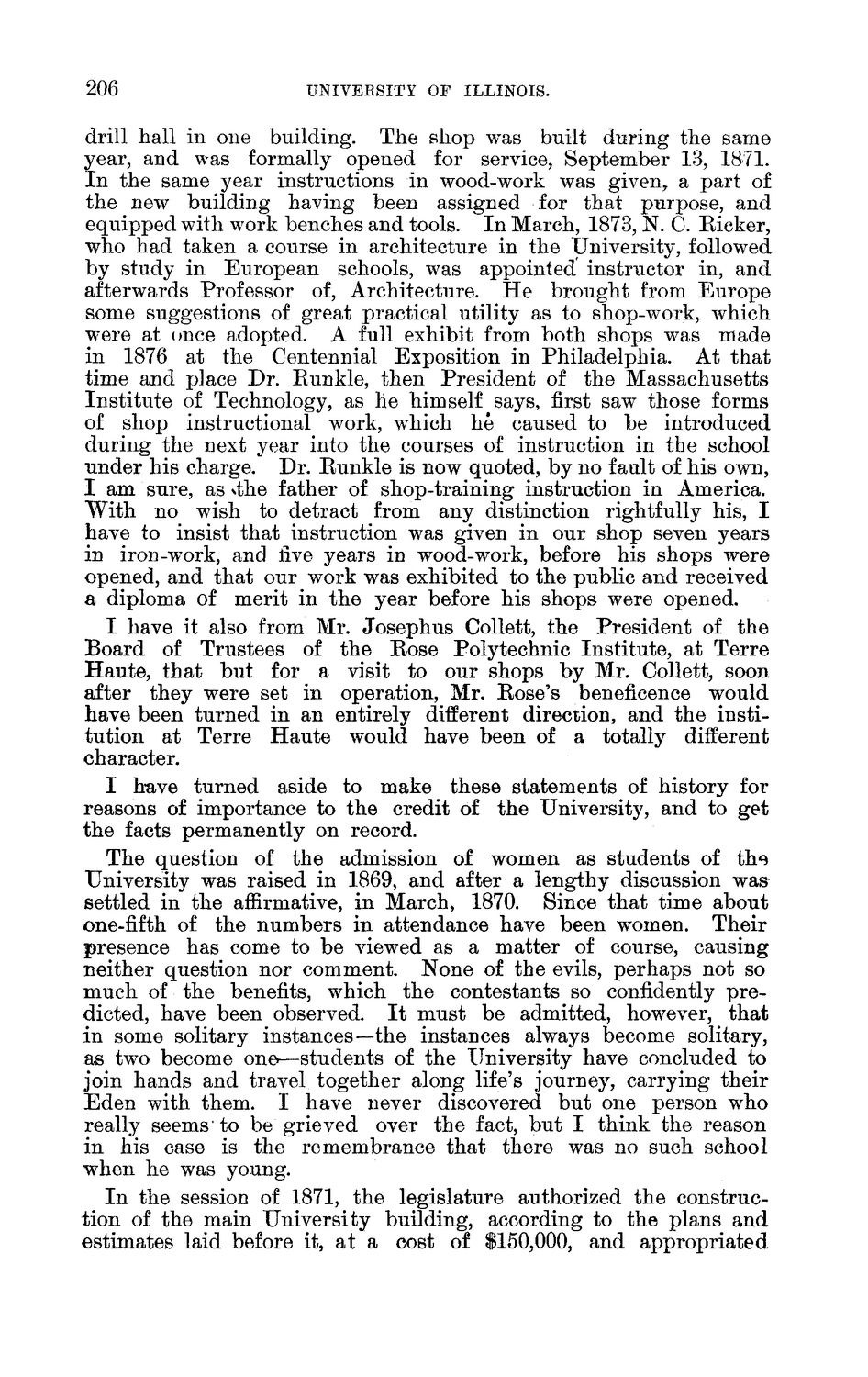| |
| |
Caption: Board of Trustees Minutes - 1888
This is a reduced-resolution page image for fast online browsing.

EXTRACTED TEXT FROM PAGE:
206 UNIVERSITY OF ILLINOIS. drill hall in one building. The shop was built during the same year, and was formally opened for service, September 13, 1871. In the same year instructions in wood-work was given, a part of the new building having been assigned for that purpose, and equipped with work benches and tools. I n March, 1873, N. C. Eieker, who had taken a course in architecture in the University, followed by study in European schools, was appointed instructor in, and afterwards Professor of, Architecture. He brought from Europe some suggestions of great practical utility as to shop-work, which were at once adopted. A full exhibit from both shops was made in 1876 at the Centennial Exposition in Philadelphia. At that time and place Dr. Eunkle, then President of the Massachusetts Institute of Technology, as he himself says, first saw those forms of shop instructional work, which he caused to be introduced during the next year into the courses of instruction in the school under his charge. Dr. Eunkle is now quoted, by no fault of his own, I am sure, as vfche father of shop-training instruction in America. With no wish to detract from any distinction rightfully his, I have to insist that instruction was given in our shop seven years in iron-work, and five years in wood-work, before his shops were opened, and that our work was exhibited to the public and received a diploma of merit in the year before his shops were opened. I have it also from Mr. Josephus Collett, the President of the Board of Trustees of the Eose Polytechnic Institute, at Terre Haute, that but for a visit to our shops by Mr. Collett, soon after they were set in operation, Mr. Eose's beneficence would have been turned in an entirely different direction, and the institution at Terre Haute would have been of a totally different character. I have turned aside to make these statements of history for reasons of importance to the credit of the University, and to get the facts permanently on record. The question of the admission of women as students of the University was raised in 1869, and after a lengthy discussion was settled in the affirmative, in March, 1870. Since that time about one-fifth of the numbers in attendance have been women. Their presence has come to be viewed as a matter of course, causing neither question nor comment. None of the evils, perhaps not so much of the benefits, which the contestants so confidently predicted, have been observed. I t must be admitted, however, that in some solitary instances—the instances always become solitary, as two become one—students of the University have concluded to join hands and travel together along life's journey, carrying their Eden with them. I have never discovered but one person who really seems'to be grieved over the fact, but I think the reason in his case is the remembrance that there was no such school when he was young. I n the session of 1871, the legislature authorized the construction of the main University building, according to the plans and estimates laid before it, at a cost of $150,000, and appropriated
| |